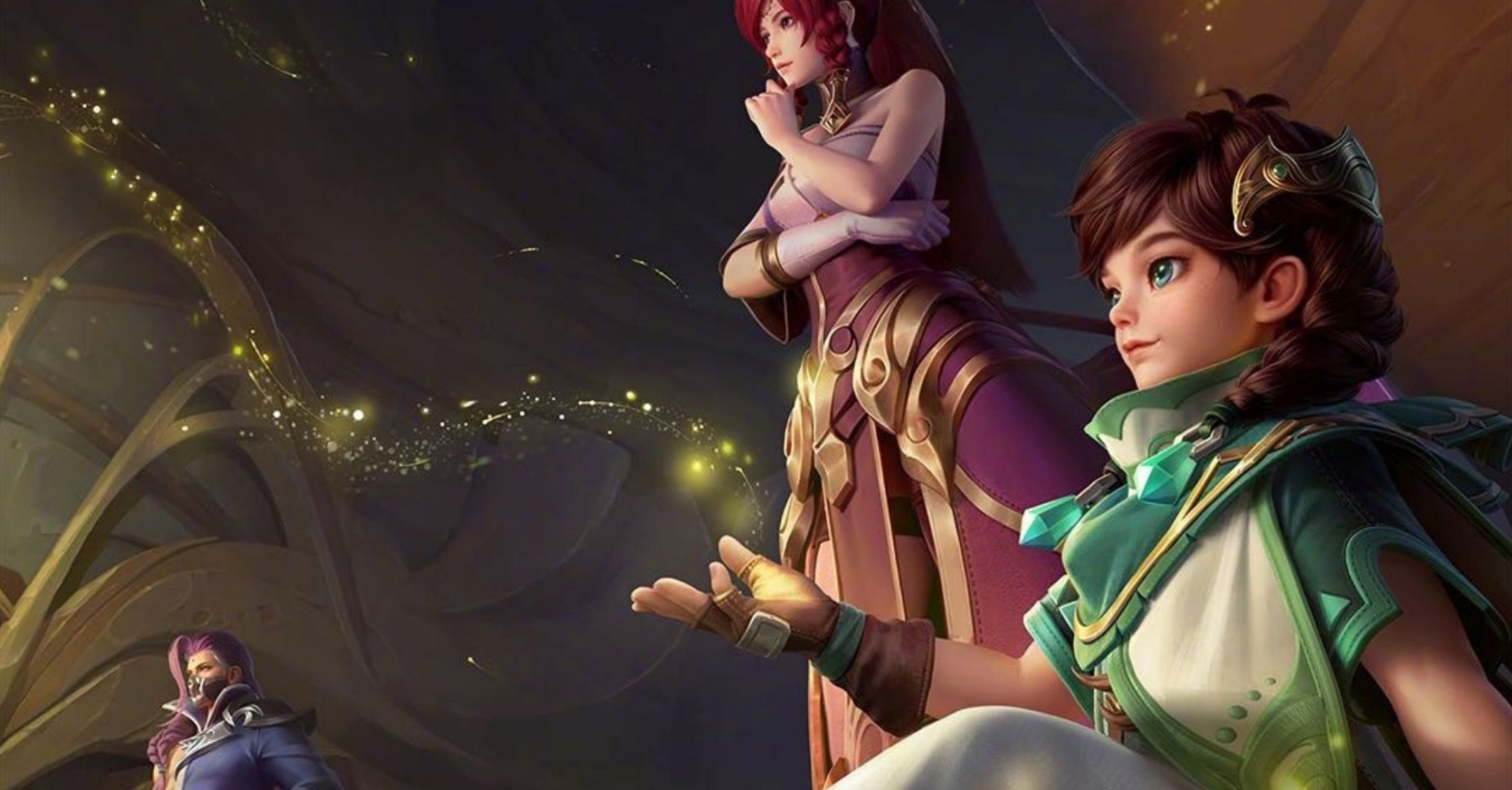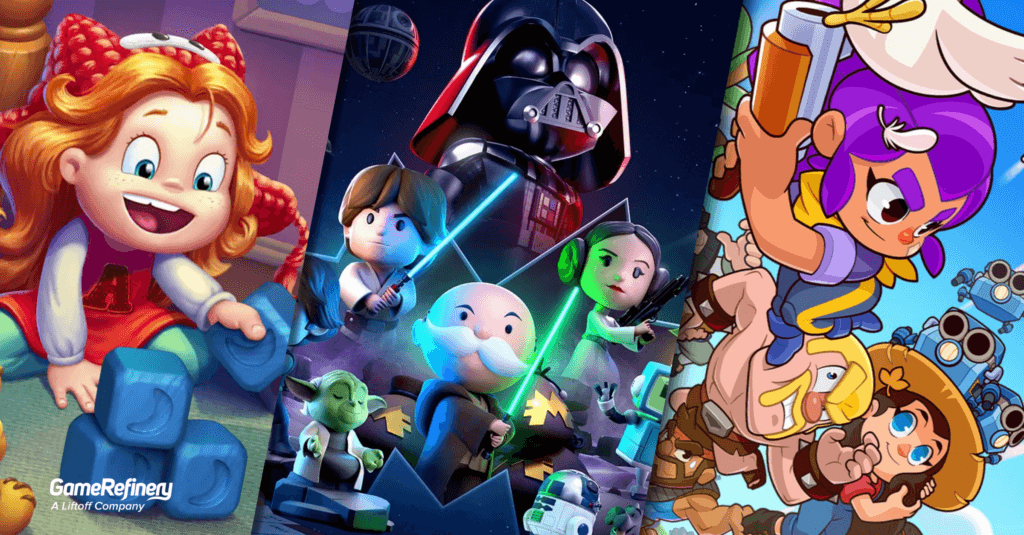Look at the top-grossing mobile game charts for the last couple of years, and you’ll find one game in particular that has consistently dominated at the top of the charts. Tencent’s Honor of Kings is the most popular mobile game in the world, which is a pretty impressive feat when you consider that—with the exception of a Brazil launch in 2023—it wasn’t until June 2024 that it started rolling out into Western markets.
Of course, Honor of Kings’ success in the global mobile game charts can be attributed to the fact that China is the largest mobile gaming market in the world, generating 31% of the mobile market’s total gaming revenue. The vast talent pool of developers in China means that a growing number of Chinese companies are finding success in the charts. But, just like Honor of Kings, once these games find success in China, developers need to pursue global expansion to keep new users and revenue coming in.
Localizing Chinese games for the global market isn’t easy, especially when many of these games have distinct characteristics that set them apart from Western titles. That said, these points of distinction can also be a selling point if communicated correctly. GameRefinery analysts and Chinese mobile market experts Kalle Heikkinen and Inka Reinola share their analysis of how Chinese gaming apps are finding success on the global stage.
China’s Economy Supports Local Developers to Push Their Games Overseas
Before we dive into how Chinese games can and are finding success overseas, it’s worth contextualizing China’s economy and the various ways this supports the development of games in the country and pushes them to find audiences in the West.
First, China has already put a lot of effort into deploying 5G technology across the country, making it much easier for people to play mobile games on the move with a strong connection.
While this is great news for mobile game developers, there are various other factors that developers releasing games in the country need to contend with, from strict regulations on time-restricted sessions to high taxes. These factors, coupled with a highly competitive gaming market, mean Chinese game companies, such as Tencent Games, are making a growing push to ship titles overseas, supported through partnerships and investments into Western game companies.
Successful Chinese mobile games are prioritizing LiveOps
As China’s mobile market is extremely competitive, Chinese game developers must make LiveOps a core part of their user acquisition and monetization strategies from day one, regardless of which genre(s) they operate in. This strong focus on LiveOps can really deliver results when applied to new games in the casual market, such as merge2 and match3 titles.
Heikkinen references two merge2 games from Chinese studios as examples of serious competitors to the longstanding merge2 champion, Merge Mansion: “I would argue that the one reason behind that is the masterful execution of LiveOps for Gossip Harbor, and also Seaside Escape, another Chinese merge2 game from the same publisher.”
Reinola agrees and backs this up by saying that many of the distinctive features in Gossip Harbor, such as the story and art style, can be seen in another merge game called Love and Pies. “What they did differently is adding a ton of different LiveOps things and more monetization in the game,” she says. “[Chinese developer, Microfun] still frequently adds new kinds of events and is looking at the market all the time to see what’s new and what’s fresh, and then adding it in there… They really know how to monetize and how to engage the players.”
Heikkinen strongly advises anyone looking to learn more about live events trends in the casual space to download and play Gossip Harbor and Seaside Escape, or use GameRefinery’s Live Events Tracker to explore their LiveOps calendars.
Chinese lore and cultural references can be distinct selling points
Some mobile games developed in China feature cultural references in their character designs, narrative, and art style. While there will always be some elements of game design that need localizing for Western audiences (such as specific references in dialogue that would only make sense to Chinese audiences), there’s a growing number of Chinese games that are finding success overseas because their cultural references are unknown to Western audiences and come across as an interesting point of distinction.
Heikkinen points to the recent example of Black Myth Wukong, inspired by the classic Chinese novel Journey to the West. While this isn’t a mobile game, it’s one of the rare examples of a game developed in China gaining recognition on PC and consoles among Western audiences. It was even nominated as Game of the Year at this year’s The Game Awards.
“This game has been a massive hit in the Western market, so you can make the argument that utilizing [Chinese cultural elements] can actually be super interesting for Western audiences,” Heikkinen says. “It’s a really interesting topic because it feels like for a long time, Chinese developers have believed that utilizing Chinese cultural elements or heritage is something you maybe don’t want to bet on when expanding overseas,”
“People are maybe just a bit more open to having different kinds of cultural products than just US products,” Reinola adds. “ They just have different kinds of tastes, and they like to explore new things that are not just the same.”
Use art styles and other regionalized assets to resonate with your target audience(s)
Similar to how the Chinese cultural references in games such as Honor of Kings and Black Myth Wukong are interesting to Western audiences, Heikkinen points to miHoYo’s Genshin Impact as an example of a game incorporating cultural references from across the world in its game design to make players feel represented.
“I think one interesting thing about that game is the different regions and areas. One of them is called Liyue and is very much rooted in Chinese culture. But then there’s another area called Mondstadt, which definitely draws inspiration from Medieval Europe and particularly Germanic culture with the architecture,” Heikkinen says. “I think that’s a very clever way to take into account global audiences by having targeted elements that can really resonate with specific geographical areas or cultures.”
Game developers can also incorporate specific art styles that appeal to relevant target markets. Cartoon-style (not anime) art styles are very popular in the West but not in China and Japan, but a growing number of Chinese mobile games, such as Travel Town, Gossip Harbor, Top War, and Kingdom Guard, are utilizing cartoon-style graphics to make themselves more appealing to players in the West.
“A lot of Chinese games are doing this, especially if there’s a bit more casual feel in the more complex games,” says Reinola. “They use the art style that resonates.”
Understand how specific gameplay and monetization mechanics can overlap with certain markets
While some elements of game design, such as the art style, can be tweaked for specific markets, it’s important for Chinese game developers to understand the markets where there’s a natural overlap between existing gameplay and monetization mechanics.
A great example of this is gacha mechanics, which are particularly popular in miHoYo’s RPGs, such as Genshin Impact and Zenless Zone Zero. Gacha mechanics are also incredibly popular in mobile games from South Korea and Japan, meaning that Chinese games incorporating gacha mechanics will have a natural overlap with these target markets, making them feel familiar to players there.
“Chinese developers know a lot about gacha monetization, so there’s a lot of natural synergies when it comes to Chinese publishers publishing their games [in Japan], both in terms of monetization and theming,” Heikkinen explains.
Want more insight into how Chinese gaming apps are finding success on the global stage? Listen to the full conversation between Heikkinen and Reinola on Episode 59 of the GameRefinery podcast.




















